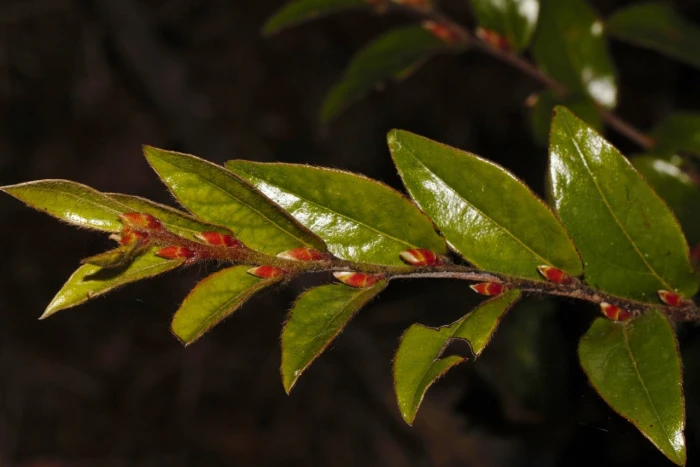Bladdernut
(Diospyros whyteana)
Bladdernut (Diospyros whyteana)
/
/

i_c_riddell
CC BY 4.0
Image By:
i_c_riddell
Recorded By:
Copyright:
CC BY 4.0
Copyright Notice:
Photo by: i_c_riddell | License Type: CC BY 4.0 | License URL: http://creativecommons.org/licenses/by/4.0/ | Rights Holder: i_c_riddell | Publisher: iNaturalist | Date Created: 2020-10-27T10:00:18-07:00 |































































Estimated Native Range
Climate Requirements for Naples, Italy
| This Plant | Your Site | Plant Suitability for Your Location | ||
|---|---|---|---|---|
| • Precipitation | 11" - 79" | 39" | Aquatic | Aquatic |
| • High Temp. | 64°F - 97°F | 86°F | Your summer temperatures are normal for this plant. | Excellent |
| • Low Temp. | 25°F - 58°F | 41°F | Your winter temperatures are normal for this plant | Excellent |
This plant may not grow well at your location - your precipitation is too high.
Summary
Diospyros whyteana, commonly known as Bladdernut, is an evergreen tree native to the understory of forested areas and riverine forests in Southern Africa. It is a member of the ebony family, reaching up to 6 meters in height with a tidy, rounded shape. The Bladdernut is adorned with dark green, glossy leaves and bears creamy, fragrant flowers that are particularly showy during the blooming season, which occurs in spring. Following the flowering period, it produces small, red fruits that are attractive to birds and persist on the tree from about August to November.
The Bladdernut tree is valued for its ornamental qualities, including its compact form, glossy foliage, and the presence of fruits that add visual interest. It is versatile in landscape use, serving as an accent plant in small gardens, forming dense hedges due to its lush foliage, and even being suitable for container planting or bonsai. In terms of cultivation, Diospyros whyteana thrives in full sun to part shade and prefers medium water and well-drained soils. It is relatively drought-resistant once established. The tree is dioecious, requiring both male and female plants for fruit production. Propagation is typically done through seeds, which require scarification to improve germination rates. Juvenile trees grow slowly but are worth the wait for their contribution to garden aesthetics. While generally low-maintenance, gardeners should be aware of potential issues such as scale insects and fungal diseases that may affect the plant.CC BY-SA 4.0
The Bladdernut tree is valued for its ornamental qualities, including its compact form, glossy foliage, and the presence of fruits that add visual interest. It is versatile in landscape use, serving as an accent plant in small gardens, forming dense hedges due to its lush foliage, and even being suitable for container planting or bonsai. In terms of cultivation, Diospyros whyteana thrives in full sun to part shade and prefers medium water and well-drained soils. It is relatively drought-resistant once established. The tree is dioecious, requiring both male and female plants for fruit production. Propagation is typically done through seeds, which require scarification to improve germination rates. Juvenile trees grow slowly but are worth the wait for their contribution to garden aesthetics. While generally low-maintenance, gardeners should be aware of potential issues such as scale insects and fungal diseases that may affect the plant.CC BY-SA 4.0
Plant Description
- Plant Type: Tree
- Height: 4-16 feet
- Width: 4-8 feet
- Growth Rate: Moderate
- Flower Color: White
- Flowering Season: Fall, Winter, Spring
- Leaf Retention: Evergreen
Growth Requirements
- Sun: Full Sun, Part Shade
- Water: Medium
- Drainage: Medium
Common Uses
Bee Garden, Bird Garden, Butterfly Garden, Fragrant, Hedges, Low Maintenance
Natural Habitat
Understory of forested areas and riverine forests in Southern Africa
Other Names
Common Names: Swartbas, Wild Coffee, Umtenatane
Scientific Names: Diospyros whyteana, Royena lucida, Royena whyteana, Royena nyassae, Royena wilmsii, Royena goetzei, Royena lucida subsp. whyteana, Royena lucida var. whyteana
GBIF Accepted Name: Diospyros whyteana (Hiern) F.White